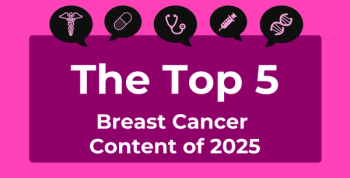
Accountable Care: Not Just for the Healthiest Patients
Key Takeaways
- ACOs managing complex populations face challenges like patient attribution, irrelevant quality measures, and financial constraints, requiring tailored strategies for effective care delivery.
- Collaborative ACOs and value-based care models help include rural providers, achieving shared savings despite resource limitations and inappropriate spending benchmarks.
ACOs serving patients with complex needs are on the rise, but policy changes are needed to support providers treating special populations.
Complex patient populations require thoughtful and comprehensive health care, especially when it’s being delivered by accountable care organizations (ACOs) working within a complex array of reimbursement and delivery regulations. During a session of the
“Years ago, when folks criticized accountable care, it was always saying, ‘You care for the healthiest beneficiaries in the Medicare population,’ and that’s frankly not true,” said panel moderator Aisha Pittman, senior vice president of government affairs at NAACOS. “We wanted to bring together our members that are caring for more complex populations or patients in rural settings, or bringing safety-net providers and their populations into accountable care, to highlight strategies and barriers to caring effectively for these populations.”
Real-World Insights From ACOs Serving Special Populations
An example of a special population is patients in long-term care nursing facilities, and LTC ACO was the first ACO focused on serving these Medicare beneficiaries, later expanding to include those in assisted living, according to panelist Kristen Krzyzewski, MBA, its chief strategy and program development officer. In this population, the average age, annual death rate, and proportion of dual Medicare-Medicaid eligibility are each high, presenting unique challenges to managing their care and expenditures.
For instance, attribution of these beneficiaries to primary care providers can be difficult because they are often cared for by chronic care management providers, behavioral health clinicians, or wound care–focused nurse practitioners. The quality measure sets designed for use in healthier populations are often irrelevant to the long-term care population, so Krzyzewski said LTC ACO looks like it is performing poorly on these when really it is refraining from providing low-value care that would be unnecessary or even harmful for their beneficiaries, such as annual breast cancer screening in those older than 75 years.
Leadership also must carefully assess new models from CMS and their appropriateness for the ACO’s patient population and business model; for instance, LTC ACO decided it liked several components of the ACO Realizing Equity, Access, and Community Health (REACH) Model but ultimately decided it wasn’t the right fit. It also could not participate in the Primary Care Flex model because nursing home facility providers are excluded.
“CMS is solving for the big population, for the broad community well population,” Krzyzewski said, “and oftentimes they’re not thinking through” the implications for special populations.
This perception was corroborated by panelist David Latzer, MPA, senior vice president of client success at Wellvana, a value-based care enablement company that recently acquired the Medicare Shared Savings Program (MSSP) business from CVS Accountable Care and now has a large footprint covering both urban and rural populations in over 40 states. The focus on rural delivery began with Caravan Health—which was then bought by Signify, then CVS, and now Wellvana—aggregating rural providers into collaborative ACOs because they weren’t large enough to join the MSSP on their own.
“Providers in rural areas, typically, when innovation happens, they’re left behind,” Latzer said. “They don’t have the resources, they don’t have the size, they don’t have the other care options that are available to them. And they’re operating, even with cost-based reimbursement, very much on a shoestring.”
The strategy of uniting participants into ACOs with a mix of provider types, he said, has been able to include rural providers in the transition to value-based care and achieve impressive shared savings. Still, there are difficulties in that the spending benchmarks are not set with rural areas in mind, where transportation options, broadband infrastructure, and fresh food sources are often not comparable to the resources in other areas.
Even providers in more urban or suburban areas face issues with connecting the resource of care providers to their patients, according to panelist Will Robinson, senior vice president of accountable care at HarmonyCares, which he described as the largest house call practice in the country, with 100% of care delivered in patient homes. It joined the MSSP due to the low fee-for-service reimbursement rates for home-based primary care, and in its quest to serve its complex and costly patients while achieving shared savings, it has identified several priority areas.
One is clinical pharmacy, with an emphasis on deprescribing when possible, and another is hospice and palliative care, which HarmonyCares is addressing with palliative telehealth and caregiver respite benefits. It also built its own wound care program so patients would not seek care from mobile wound clinics Robinson described as “predatory.”
Policy Priorities for ACOs Caring for Complex Patients
Each of the panelists mentioned the financial challenge presented by
“There's a proposed rule right now to change how those things are paid for,” Robinson said. “We have been strongly advocating that that gets finalized, not just for us, because it is 100% the right thing to do for the American people.”
Although the speakers were also encouraged by CMS’ efforts to address concerns about benchmarking as applied to complex populations, Krzyzewski mentioned that more tweaking is needed to help them offset
Looking ahead, the panelists agreed on the potential of technology to smooth the workflow of caring for special populations, such as by using artificial intelligence algorithms to identify patients who could benefit from more intensive intervention, and they hoped it will soon move beyond provider back offices to the front lines of patient care.
“The technology is super helpful from a practice management standpoint, in becoming more efficient, and organizing our resources more efficiently, and identifying who needs interventions,” Robinson said. “The question is, at the end of the day, who’s going to actually effectuate the intervention and who’s delivering the clinical care when somebody needs it?”
References
1. Mattina C. ACOs’ focus on rooting out fraud aligns with CMS vision under Oz. AJMC®. April 23, 2025. Accessed October 15, 2025.
2. Chernew ME, Heath J, McWilliams JM. The merits of administrative benchmarks for population-based payment programs. Am J Manag Care. 2022;28(7):e239-e243. doi:10.37765/ajmc.2022.88799
Newsletter
Stay ahead of policy, cost, and value—subscribe to AJMC for expert insights at the intersection of clinical care and health economics.









































